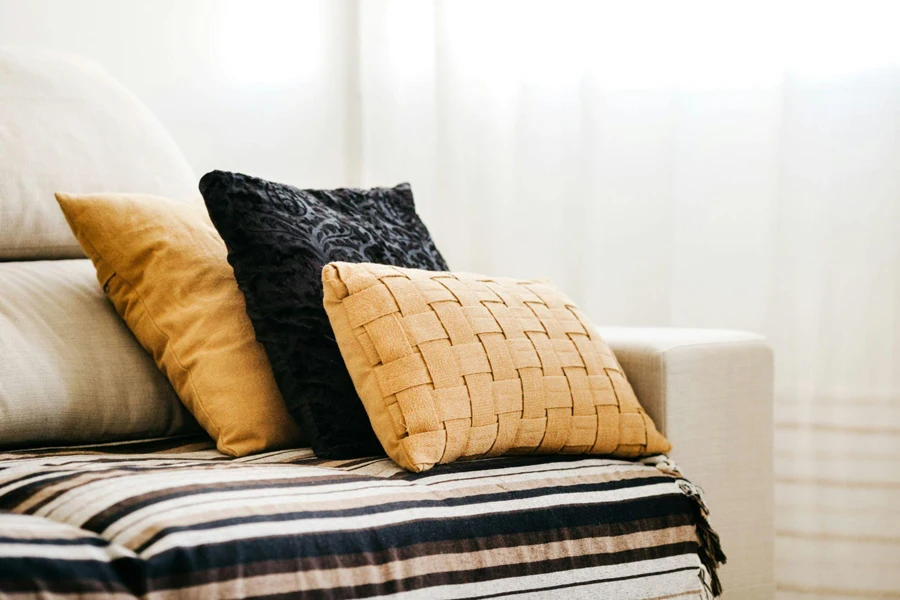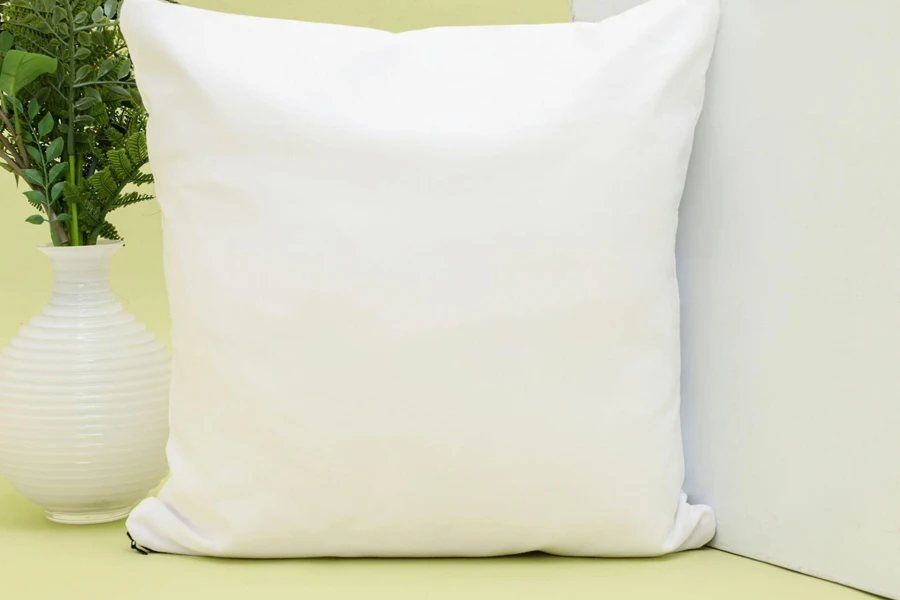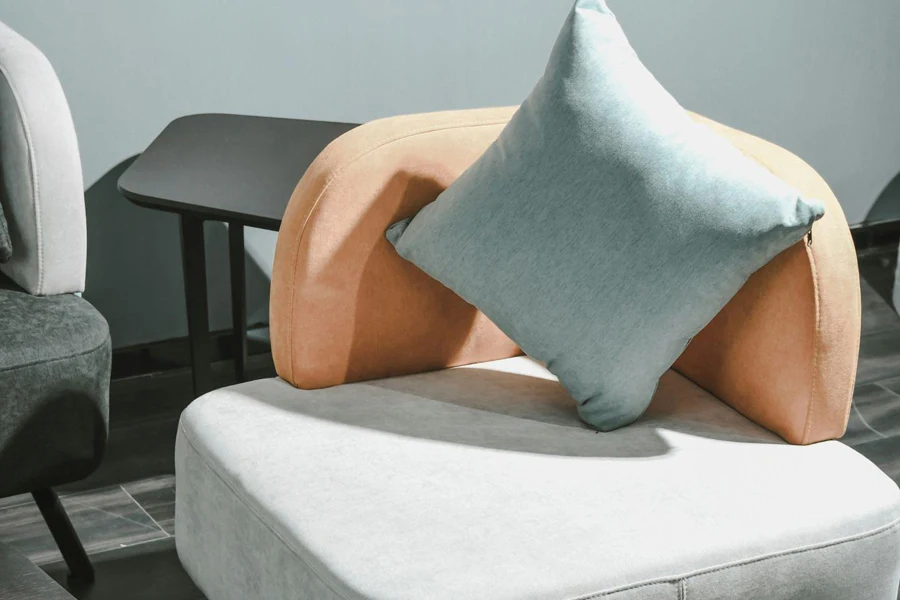Table of Contents
● Introduction
● Market overview
● Different types and their features
● Things to consider when selecting products
● Conclusion
Introduction
Choosing the right pillow and cushion covers is more than a detail; it’s an essential aspect of home decor that blends functionality with aesthetic elegance. These covers not only protect the pillows but also contribute significantly to the ambiance of any room, enhancing both comfort and style. As market trends evolve, the variety and sophistication of available options have expanded, allowing homeowners and decorators to express personal style and preferences in new and exciting ways. High-quality materials and the right designs can transform a simple living space into a refined and inviting area. Therefore, selecting the perfect pillow and cushion covers is a crucial decision for anyone looking to elevate their home environment effectively.

Market overview
The home decor market, particularly in the realm of pillow and cushion covers, is witnessing significant growth, driven by an increasing focus on interior aesthetics and comfort within domestic settings. According to a recent market analysis, the U.S. pillows market size was valued at $3.07 billion in 2022 and is projected to expand to $4.28 billion by 2030, demonstrating a steady CAGR of 4.48% during the forecast period. This growth is propelled by heightened consumer awareness of the importance of quality sleep and the rising demand for home comfort enhancements post-pandemic. Enhanced functionality in home textiles, including features like sleep trackers and hypoallergenic materials, meets the consumer’s increasing demand for products that support health and well-being.
Additionally, the market sees a shift towards sustainability, with manufacturers investing in organic materials and innovative, eco-friendly designs that appeal to environmentally conscious consumers. The pandemic accelerated the shift towards online shopping, with e-commerce sales channels witnessing substantial growth, thereby expanding market reach and consumer access to diverse products. This trend, combined with continuous innovation by manufacturers in both product design and material technology, suggests a dynamically evolving market. These factors collectively contribute to the market’s robust growth trajectory as consumers increasingly seek products that combine comfort, aesthetics, and environmental considerations in their home decor choices.

Different types and their features of pillow and cushion covers
Cotton covers
Cotton remains the preferred choice for pillow and cushion covers due to its exceptional qualities that cater to both comfort and practicality. Its breathability is particularly beneficial, making it suitable for use in varied climates, ensuring comfort year-round. Cotton is also renowned for its durability; it withstands numerous washes without losing integrity, which is crucial for maintaining hygiene and appearance in high-use settings like living rooms and hospitality environments. Moreover, cotton’s adaptability to a widely range of dyes and prints allows for extensive customization. Whether for a subtle, understated look or a bold, vibrant pattern, cotton can be tailored to fit any room’s decor, making it a versatile choice for decorators aiming to match themes or color schemes accurately.
Velvet and synthetic blends
Velvet cushion covers offer a sense of luxury and sophistication with their rich textures and deep, saturated colors. They are particularly valued in settings where a touch of elegance is desired, such as formal living rooms or master bedrooms. Despite their luxurious appearance, velvet covers are increasingly available in blends that offer durability and ease of care, making them suitable for regular use. Synthetic blends, on the other hand, provide a practical solution for busy households. These materials are engineered to be robust, resistant to fading and wear, making them suitable for families with children or pets. Their ability to mimic more expensive fabrics makes synthetics a cost-effective yet stylish option for those looking to upgrade their home decor without significant investment.
Design and color in home styling
The design and color of pillow and cushion covers are decisive elements in interior design, offering a straightforward way to enhance or alter a room’s aesthetic. The choice of patterns can dictate the space’s character—geometric prints can offer a modern look, floral patterns can introduce a romantic flair, and bold, abstract designs can make a contemporary statement. Similarly, color choices can influence the mood of a room; for example, cooler tones can create a calming effect, whereas warmer colors can energize a space. The strategic use of decorative covers allows homeowners to experiment with a trendy long-term commitment, making them suitable for seasonal updates or quick style refreshes.
Advancements in hypoallergenic and eco-friendly covers
As consumer awareness of health and environmental issues grows, so does the demand for hypoallergenic and eco-friendly pillows and cushion covers. Hypoallergenic options are designed to prevent the accumulation of dust mites and other allergens, providing a healthier sleep environment that is particularly beneficial for those suffering from allergies or asthma. Eco-friendly covers are made from sustainable materials such as organic cotton or recycled polyester, which not only reduce environmental impact but also cater to consumers’ growing preference for green products. These advancements demonstrate the industry’s response to consumer demand for products that support both personal health and the planet.
Technological innovations in pillow and cushion covers
The integration of technology into pillow and cushion covers represents a transformative trend in the bedding industry. Advanced features such as temperature regulation, moisture management, and sleep tracking enhance user comfort and health. For instance, temperature-regulating fabrics adjust to the body’s needs, providing a cooler sleep environment in warm conditions and warmth in cooler settings. Moisture-wicking technologies keep the sleeping surface dry, which is crucial for comfort and skin health. Furthermore, sleep-tracking features embedded in pillow covers can monitor sleep patterns, insights that may help improve sleep quality. These technological enhancements are shaping the future of home textiles, blending traditional comfort with modern innovation to cater to the health-conscious, tech-savvy consumer.

Things to consider when selecting products
Material and fabric quality
When selecting materials for pillows and cushion covers, it’s crucial to consider both durability and comfort. High-quality materials like natural fibers, including cotton and linen, offer excellent breathability and softness, making them suitable for comfort. Synthetic fibers, such as polyester, provide high durability and are less susceptible to shrinking and wrinkling, making them suitable for heavy usage areas. For luxury settings, silk and velvet are preferred for their softness and opulence, though they may require more careful maintenance. The choice of material should align with the usage needs—natural for comfort and relaxation, synthetics for high traffic, and child-friendly environments.
Size and fit
Choosing the right size and fit for pillow and cushion covers is essential to ensure they perform their protective and decorative functions properly. Standard pillow sizes—such as king, queen, and standard—require covers that match these dimensions closely to avoid a sloppy appearance or excessive fabric that could lead to discomfort during use. Decorative pillows might come in unique shapes and sizes, demanding custom-sized covers that fit snugly. Ensuring the correct fit enhances the overall look and feel of the pillows, contributing positively to the room’s decor and the user’s comfort.
Care and maintenance
Maintaining pillow and cushion covers is key to extending their life and preserving their appearance. Washable fabrics like cotton and synthetic blends can be regularly laundered at home, following care instructions to avoid damage. Delicate materials such as silk or velvet might require professional cleaning to maintain their color and texture. For everyday maintenance, vacuuming or light brushing can help remove surface dust and prevent dirt from becoming embedded in the fabric. Spot cleaning is recommended for small stains, using appropriate cleaning solutions that do not harm the fabric.
Style and color coordination
Matching pillow and cushion covers with interior decor is not just about color coordination but also involves selecting styles and patterns that complement the setting. For a harmonious look, choose colors that echo those found in other decor elements, such as rugs, curtains, and furniture. Using contrasting colors can add visual interest and highlight certain areas within a room. The style of the cover, whether modern geometric patterns, classic florals, or solid colors, should support the room’s overall theme. For instance, minimalist decor benefits from simple designs and muted colors, while a bohemian-style room can be enhanced with vibrant colors and intricate patterns.
Conclusion
Selecting the right pillow and cushion covers is crucial for blending functionality with aesthetic appeal in home decor. These covers not only protect the pillows from wear and tear, enhancing their longevity but also play a pivotal role in the styling of a space. The right choice in materials, sizes, and designs can transform an area, providing both comfort and a visual treat. High-quality covers contribute to a cohesive look, tying together various elements of a room’s decor while also offering practical benefits such as ease of cleaning and durability. Moreover, pillow and cushion covers are an effortless and economical way to refresh a living space without committing to major renovations. They allow for seasonal updates or quick style changes that keep a home looking modern and inviting. Whether aiming for a splash of color, a touch of luxury, or a practical update, these covers are indispensable components of thoughtful interior design. Their selection should, therefore, be considered carefully to ensure they fulfill both their decorative and functional roles effectively.




